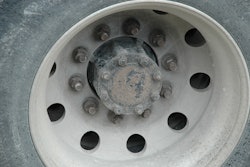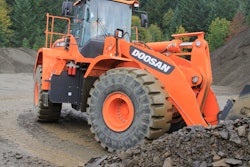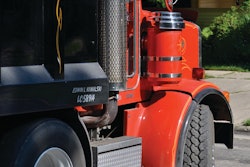
A Youtube video currently making the rounds of social media sites shows a technician in a maintenance shop sitting on a large tire when it suddenly bursts, sending him flying. This video dramatically illustrates just how dangerous a tire under pressure can be. It also demonstrates the importance of keeping tires properly maintained to maximize service life and avoid placing both people and equipment in hazardous situations.
Following are four tips to help you get more life from your tires:
1. Start by selecting the right tire for the job: Picking the right tire is perhaps the most important step you can take to avoid shortening a tire’s service life. Although the tire industry has developed various nomenclature to assist you in tire selection, it’s useful to consult the tire supplier to ensure the ones you choose are appropriate for the type of equipment and the operating conditions in which it will be used.
Selection Drives Tire Performance and Costs
Understand Tire Ratings to Match Off Road Tires to the Application
2. Maintain recommended pressure: Both under- and over-inflation can promote wear that can lead to premature tire failure including, under certain circumstances, blowouts or bursting.
Under-inflation tends to show up as excess wear in the shoulders at the outside edges, because the center of the tread tends to concave. It can also produce excess fatigue in the tire and excess deflection, which leads to heat generation that can result in failure in the bead area, sidewall and other areas.
Over-inflation can make tires more susceptible to punctures, and can decrease productivity. The excess inflation pressure rounds out the tire and reduces the size of the footprint. That in turn sacrifices flotation and traction.
Make it a practice to check tire pressure on a regular basis and adjust pressure levels per tire manufacturer guidelines for the application and load. Use a tire gauge to check inflation pressure; do not rely on visual inspection. At even 5% above or below the recommended pressure, you can start to sacrifice tire life. By the time you can visually detect low air pressure, you have likely already shortened the tire’s life in your fleet.
Three Steps to Maximum Truck-Tire Life
3. Perform regular visual inspections: While it’s difficult to visually assess inflation levels, it’s still important to regularly inspect tires for signs of damage or excessive or uneven wear, which may indicate improper inflation or alignment problems. Check for cracks or bulges in the sidewalls or tread, chunking of tread, punctures, embedded foreign objects, etc., that could put the tire at risk of failure.
4. Conduct tire post mortems: Old tires provide significant clues that can lead to future performance improvements. Examine the tires you take out of service. Did they perform as expected during their service life? If not, a review of the tire type and application may be in order to determine if changes are needed either in the tires themselves or the equipment operating practices being used.















